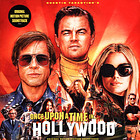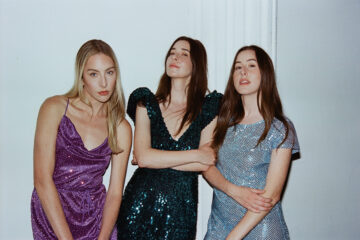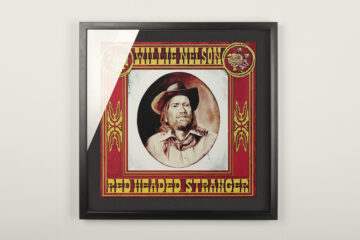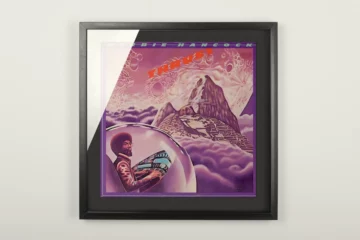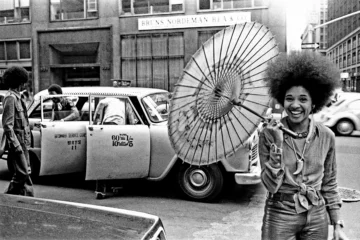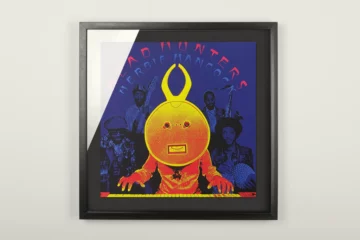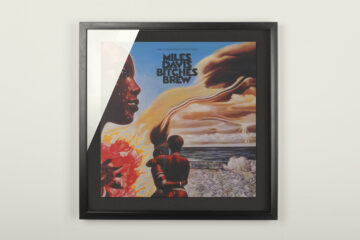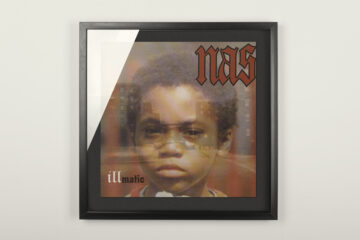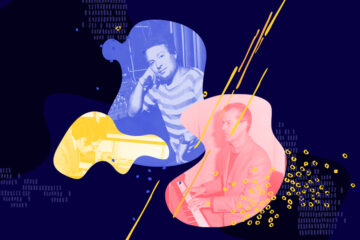Quentin Tarantino’s cinematic oeuvre is peppered with references and permeated with a huge love for quotations. As an integral part of pop culture, it celebrates, references and discusses pop – the medium of film first and foremost, of course, but to a large extent also music. In his feature film debut »Reservoir Dogs«, the protagonists – gangsters who meet to plot a coup – discuss the lyrics of Madonna’s »Like A Virgin« as if they were talking shop about the calibre of their guns. Later, one of the gentlemen, Mr. Blonde, professes that »Stuck In The Middle With You« by Stealers Wheel is his favourite song when it comes on the radio. The catchy track underscores the infamous torture scene in which Mr. Blonde starts to dance before cutting off one of his victim’s ears. The dissonance between the upbeat sounds and the narrative content of the scene marks a stark dichotomy that is particularly disturbing.
The sugar-sweet sound of the seventies
»Stuck In The Middle With You« was a hit in the early 1970s. Known as a director who attaches great importance to hand-picked music, Quentin Tarantino has often stated that he spent his youth in the 70s, so that it’s not surprising for him to draw mainly from that era when compiling his soundtracks. When asked about »Reservoir Dogs«, Tarantino once said the following: »When it came to choosing seventies music, I didn’t want to go for Black Sabbath, (…) or Kiss or Elton John or any of those big names (…). I wanted to go for the super sugary bubble-gum sound of the early seventies«.
When using soundtracks in his screen works, Tarantino is not usually concerned with creating historically authentic film moments. Rather, he wants them to be true, in the sense – or better: in the course, since the related songs co-create film impressions – of an exaggerated stylisation, cinematic aesthetics and film-historical anchoring. He succeeds in this in different ways depending on the film. For instance, by putting together a musical blaxploitation backdrop for »Jacky Brown« that makes Foxy Brown fall out of time and in which Johnny Cash also finds his place.
The special status of Ennio Morricone
Time and time again, Quentin Tarantino creates iconic film moments in which he completely appropriates the songs he chooses in a pop-cultural context. Today, »Bang Bang« and »Misirlou« seem inseparable from »Kill Bill« and »Pulp Fiction«. Who were Nancy Sinatra or Dick Tale & The Deltones again by the way? The intro to Quincy Jones’ »Ironside« can even been seen to degenerate into a sound effect under Tarantino’s direction of »Kill Bill«. It’s only with Luis Bacalov and Ennio Morricone that he appears to have difficultly brushing off the dust of the Spaghetti Westerns on which they are based when he helps himself to the archives again – although in these cases it is all about dusting them off.
Time and time again, Quentin Tarantino creates iconic film moments in which he almost completely appropriates the songs he chooses in a pop-cultural context.
Tarantino repeatedly creates iconic film moments in which he almost completely appropriates the corresponding songs for his own purposes in a pop-cultural context.
The songs as a backdrop
Tarantino’s latest film »Once Upon A Time in Hollywood« is set in 1969 and also departs from his tried and tested pattern of song choice. The soundtrack features contemporary songs alone that musically reflect the era of the fading 1960s. You get to hear Joe Cocker, the Buchanan Brothers, Deep Purple, Vanilla Fudge, Paul Revere & The Raiders and Neil Diamond. The fairy-tale element of the film, which already resonates in the title, is supported here by the historical claim of an authentic contemporary document. This sounds audacious, but it works – among other things, probably, by putting the music pieces used in the film in their place. Tarantino does not tie the tracks to his images this time. Rather, he lets them play, quite pragmatically, on the radio, as background music, as part of the scenery.
For example, when Brad Pitt in the role of Cliff Booth cruises the streets, »Mrs. Robinson« by Simon & Garfunkel can be heard playing on the loudspeakers of his car. This is the moment he spots some members of the Manson Family on his way home. Does this mark the beginning of an individual maturity test within the story? Analogous to the film of the same name in which the song was first contextualised? That was later quoted and parodied in »American Pie«? And which here culminates in – oh ha – the Manson Family getting f**ked? Quentin Tarantino always offers room for obvious to wild speculation. An invitation that is always accepted as gratefully as his soundtracks are accepted on vinyl.


